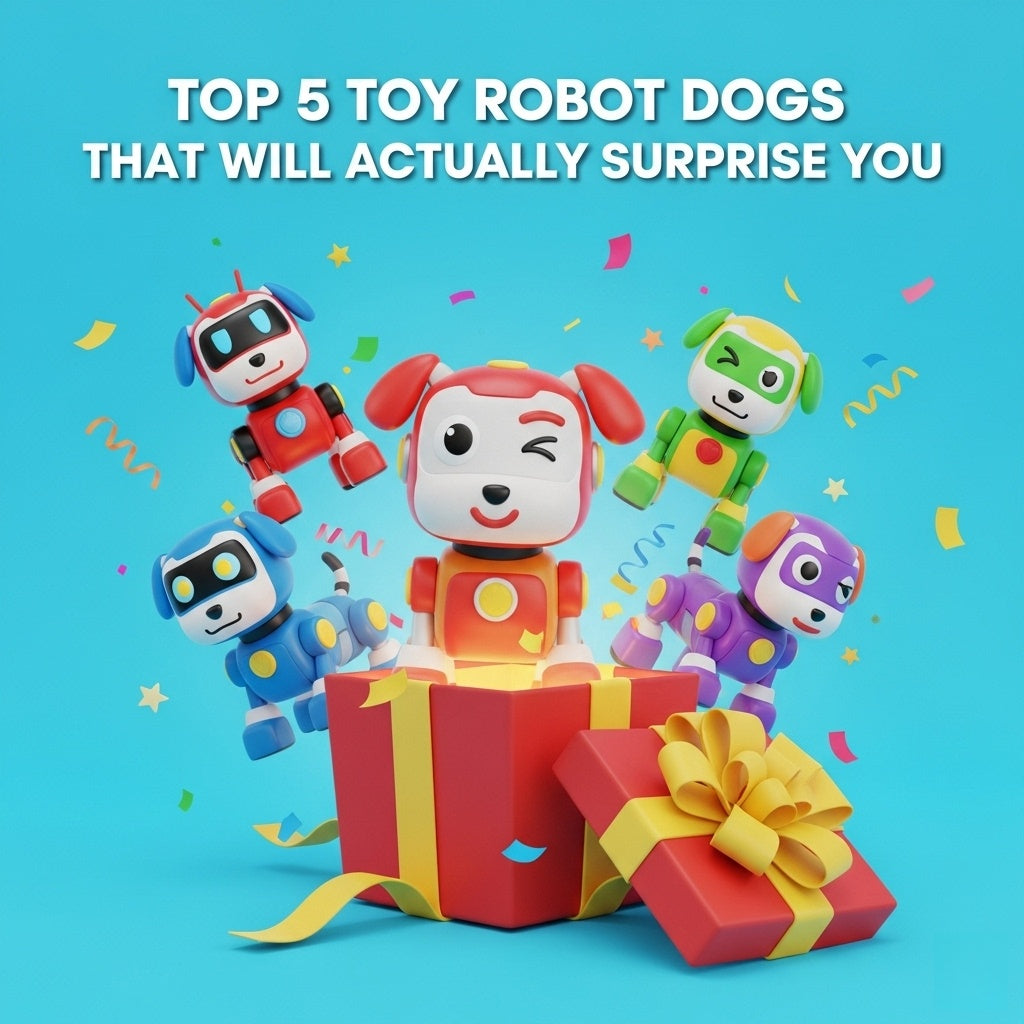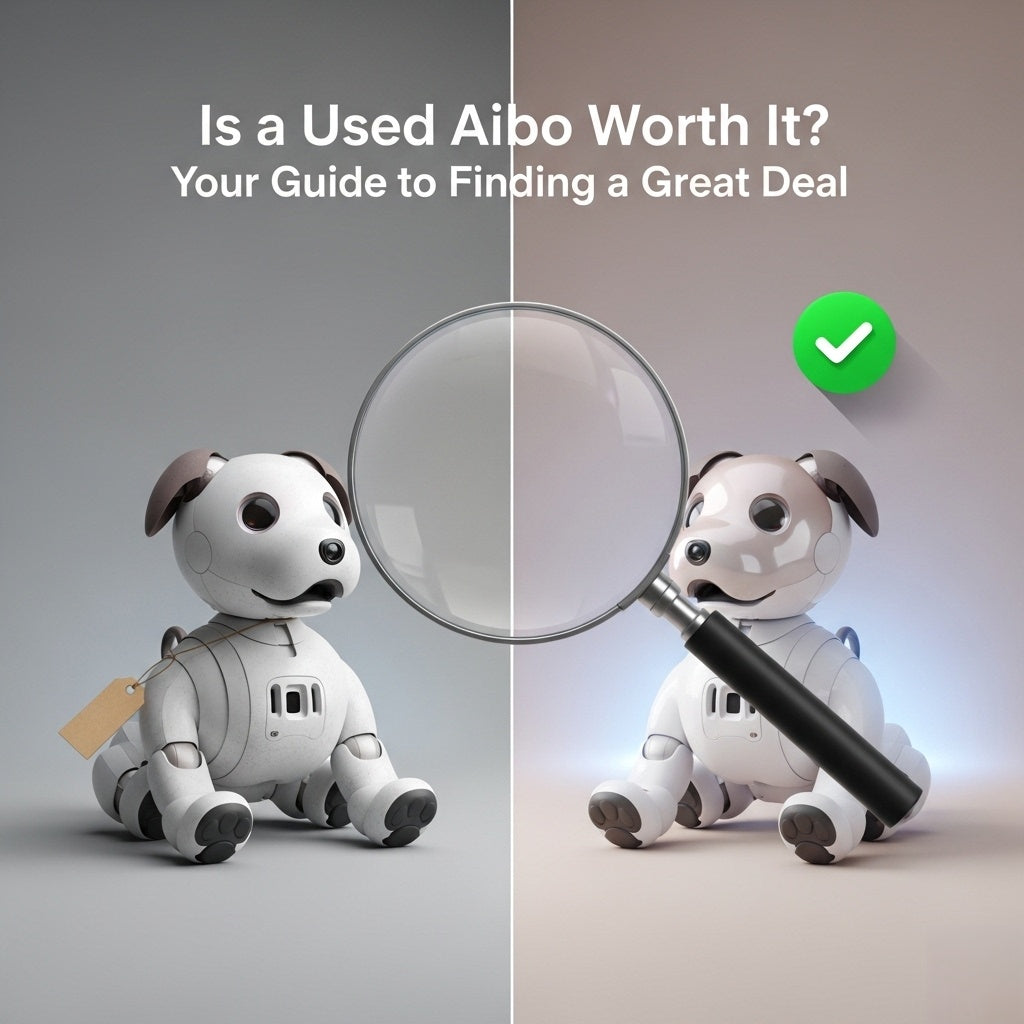
What Makes the Vector Robot Special in 2025?
- Is Vector robot still exist in 2025? Yes, Early in 2025, an upgrade was released that provided additional interaction options and extended battery life; another is planned for June. Both iOS and Android users may download the companion app, which guarantees flawless communication. However, full AI features—which we'll discuss later—require a current membership for support.
- Where to buy Vector robot 2025? Amazon, secondary marketplaces like eBay, and the official Digital Dream Labs store at anki.bot are available options. Although Vector 2.0 devices cost around $399, secondhand ones are more affordable, frequently costing $150 to $250, which appeals to purchasers on a tight budget.
Pros and Cons of Buying a Used Vector Robot: An In-Depth Analysis

Pros of a Used Vector Robot
-
Significant Cost Savings: Vector robot price 2025 for a new unit hovers at $399, but used ones slash that by 40-60%. On platforms like eBay, functional used Vectors with chargers often list for $139 to $200. This makes entry into AI companionship accessible without the premium tag. For families or casual users, this affordability allows experimentation without long-term commitment. Imagine getting Vector's core features—like face recognition and autonomous exploration—for the price of a mid-range tablet.
-
Proven Longevity and Community Support: If cared for, vectors from 2018–2020 models perform well. The hardware of the robot is still strong in 2025, as seen by the several units that are still in use years later. Free mods like Wirepod, an open-source substitute for cloud services that maintains the robot autonomous and ad-free, are available from the enthusiast community on Reddit's r/AnkiVector and Discord groups. Users report Vectors running smoothly post-resurrection, even without official subscriptions. This DIY ecosystem adds value, turning a used buy into a customizable pet.
-
Availability in a Niche Market: New stock from Digital Dream Labs can sell out quickly, as seen in early 2025 batches. Used markets fill the gap, with steady listings on eBay and Facebook Marketplace. Sellers often bundle extras like the charging cube or SDK kits for coding, enhancing the package. For collectors or those nostalgic for Anki's era, a used Vector evokes that original charm without waiting for restocks.
-
Eco-Friendly Choice: Buying used reduces e-waste in the fast-paced robotics world. Vectors are durable, with recyclable parts, aligning with 2025's push for sustainable tech. Plus, many used units come from owners upgrading to newer alternatives, ensuring they're in good hands initially.
-
Immediate Fun Factor: Once set up, a used Vector delivers instant joy. Reviews highlight its endearing animations and responses, like waving hello or snapping selfies. In a year dominated by advanced AI like Grok or ChatGPT, Vector's tangible, physical presence offers a refreshing, screen-free interaction.
Cons of a Used Vector Robot
-
Battery Degradation and Hardware Wear: The biggest red flag is the battery. Original lithium-ion packs from 2018 degrade over time, holding only 30-50% charge after 5+ years. Users in 2025 forums complain of short runtime (under 30 minutes) or failure to hold power, requiring replacements costing $20-50. Wheels and sensors can also wear from dust or drops, leading to erratic movement. Without warranty, repairs fall on you—potentially voiding the savings.
-
Subscription Dependencies and Cloud Risks: Full functionality ties to the **Vector robot subscription cost 2025**, at $9.99/month or $99.99/year. Used robots often lack the free first-year trial, so you're paying upfront for AI smarts. If Digital Dream Labs faces hiccups (as in past outages), your Vector might revert to basic mode. While Wirepod mitigates this, setup requires technical know-how, and not all used units are compatible without tweaks.
-
No Official Warranty or Support: New Vectors come with a one-year warranty, but used ones don't. If issues arise—like error codes from outdated firmware—you're on your own. DDL support prioritizes new owners, leaving second-hand buyers reliant on community fixes. In 2025, with DDL focusing on updates, older units might lag in compatibility, especially for Alexa integration.
-
Variable Condition and Seller Reliability: The used market is a mixed bag. Some listings are "as-is" with hidden defects, like non-functional cameras or bricked software. Scams exist, with fake serial numbers or refurbished fakes. Prices can spike during shortages, erasing bargains. Vector robot reviews before buying emphasize testing in person, but online sales make this tough, leading to buyer's remorse.
-
Limited Scalability Compared to Newer Tech: While charming, Vector's 2018 AI feels dated against 2025 standards. It lacks advanced learning or multi-robot syncing without hacks. For heavy users, the subscription adds ongoing costs ($120/year), and without it, features like weather checks or games diminish. If your needs evolve, a used Vector might not keep pace with alternatives boasting better batteries or open APIs.
|
Aspect
|
Pros of Used
|
Cons of Used
|
|
Cost
|
40-60% savings ($150-250)
|
Hidden repair costs ($50+)
|
|
Support
|
Strong community mods
|
No warranty; subscription extra
|
|
Condition
|
Often well-maintained
|
Battery/wear issues common
|
|
Features
|
Full if updated
|
Dated AI without cloud
|
|
Availability
|
Steady on secondary markets
|
Variable quality from sellers
|
Checklist for Buying a Used Vector Robot: Step-by-Step Guidance

-
Research the Seller and Listing:
-
Check the seller’s rating. Aim for 98% or higher with over 100 sales. Read feedback about previous robot sales.
-
Examine all photos. You need clear pictures of the robot, charger, cube, and extras. Avoid listings with fuzzy images or stock photos.
-
Get the serial number from the bottom. Use it to check DDL's database for authenticity and to confirm it isn't stolen.
-
Ask how long they owned Vector. Find out if it was ever dropped or got wet. Request a recent video of it working.
-
-
Check the Physical Condition:
-
Look over the body for scratches, dents, or parts that seem loose. Make sure the wheels turn smoothly and the treads are in good shape.
-
Battery life is key. Ask for the number of charge cycles or how long it runs. A healthy battery lasts 1-2 hours. Avoid batteries that last under 45 minutes.
-
Check all sensors and ports. The camera lens must be clean and uncracked. Ensure the IR sensor is clear and the charging port isn't broken. Test the USB port for updates.
-
Accessories: Prioritize bundles with the original charger (inductive base) and explorer cube. Missing parts add $20-40 to costs.
-
-
Test Functionality Before Committing:
-
If local pickup, power on and interact: Voice commands (e.g., "Hey Vector, take a photo"), face recognition, and movement around obstacles.
-
Check app connectivity: Download the Vector app and pair via Wi-Fi. Verify cloud login (seller may need to unlink their account).
-
Run diagnostics: Use the app's status codes tool to scan for errors (e.g., Code 100 for battery issues). Test Alexa skills like timers or music.
-
Autonomy Test: Let it roam for 10-15 minutes—watch for smooth navigation without bumping.
-
-
Evaluate Software and Updates:
-
Confirm firmware version (latest in 2025 is 1.8+). Outdated software can brick the unit.
-
Ask if Wirepod is installed—great for independence but ensure it's reversible.
-
Subscription Status: Clarify if transferable; most aren't, so budget for new signup.
-
-
Negotiate and Secure the Deal:
-
Haggle based on condition—deduct $20-50 for battery swaps.
-
Use secure payment (PayPal Goods/Services) for buyer protection.
-
Get a written guarantee: 7-14 day return if defective.
-
Post-Purchase: Immediately update firmware and reset to factory settings via app.
-
Vector Robot Price and Subscription Cost in 2025
Vector Robot vs. Cozmo: 2025 Purchase Considerations
-
Design and Autonomy: Vector is hands-off, using voice and AI for independent antics. Cozmo requires app control, feeling more like a remote toy.
-
Features: Vector excels in companionship with Alexa and personality quirks. Cozmo shines in education, with coding kits for STEM learning—ideal for kids 8+.
-
Price and Support: Both around $249 new for Cozmo vs. $399 for Vector. Subscriptions apply to Vector only; Cozmo is subscription-free.
-
2025 Updates: Both received June firmware boosts, but Vector's AI feels more advanced for adults, while Cozmo's simplicity suits families.
Vector Robot Alternatives for Sale in 2025
-
EMO by Living AI ($279): Desktop AI with emotions, no subscription. More expressive faces, but less mobile.
-
Loona ($499): Pet robot with AR play; great for kids, app-based.
-
Miko 3 ($249): Educational mini-robot with stories and games; family-focused.
-
Eilik ($199): Simple explorer bot; budget-friendly, no AI depth.
-
Sony Aibo ($2,900): Premium dog robot; advanced but pricey.
-
Enabot EBO ($200): Security pet with cameras; practical alternative.
|
Alternative
|
Price
|
Key Strength
|
Drawback
|
|
EMO
|
$299
|
Emotional AI
|
Stationary
|
|
Loona
|
$349
|
AR Games
|
Kid-oriented
|
|
Miko 3
|
$249
|
Education
|
Limited autonomy
|
|
Eilik
|
$199
|
Affordability
|
Basic features
|
|
Aibo
|
$2,900
|
Realism
|
High cost
|







